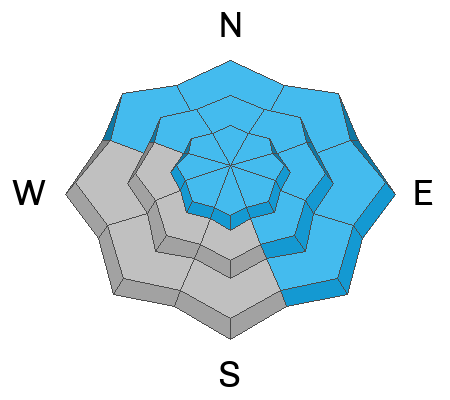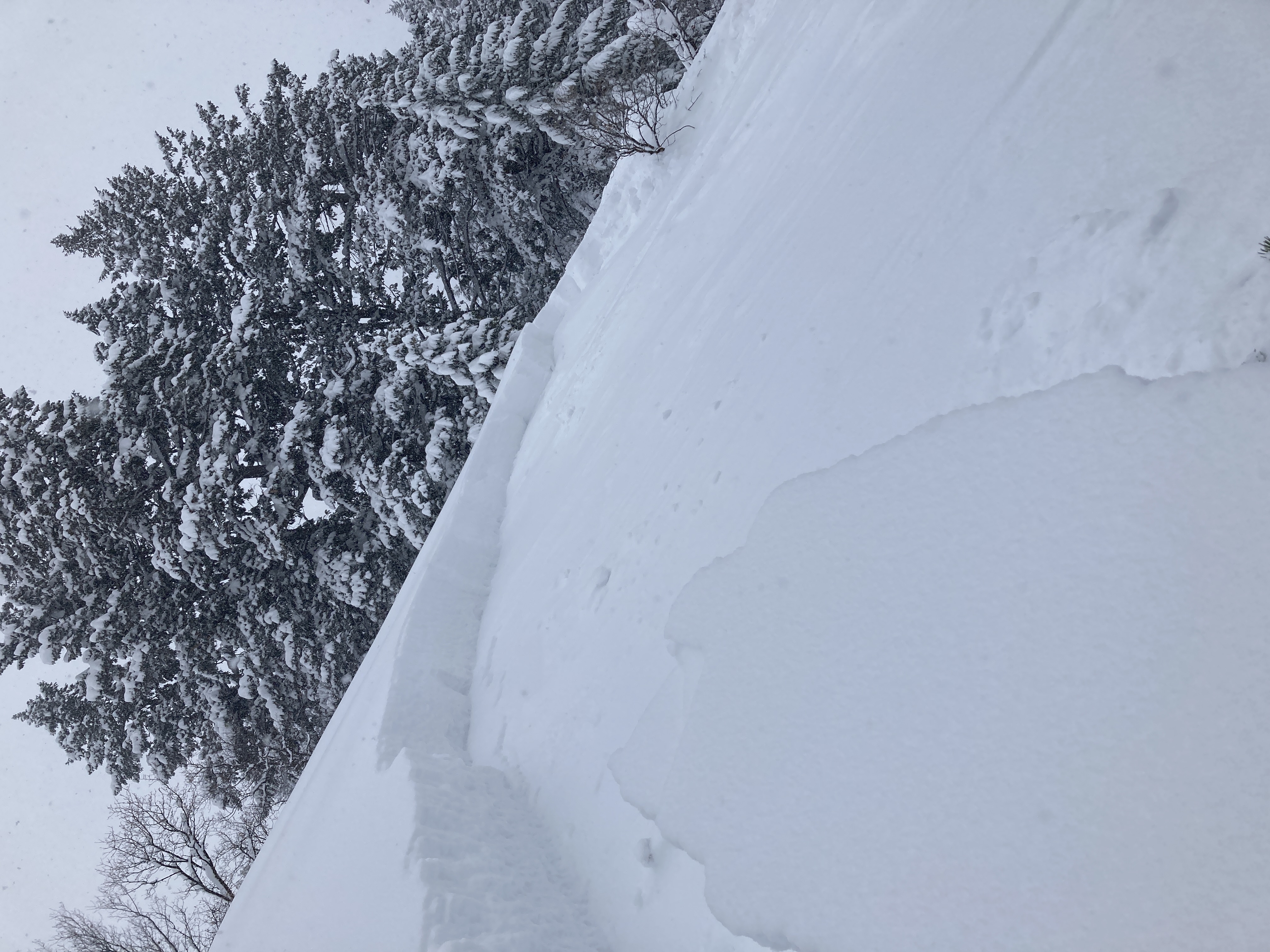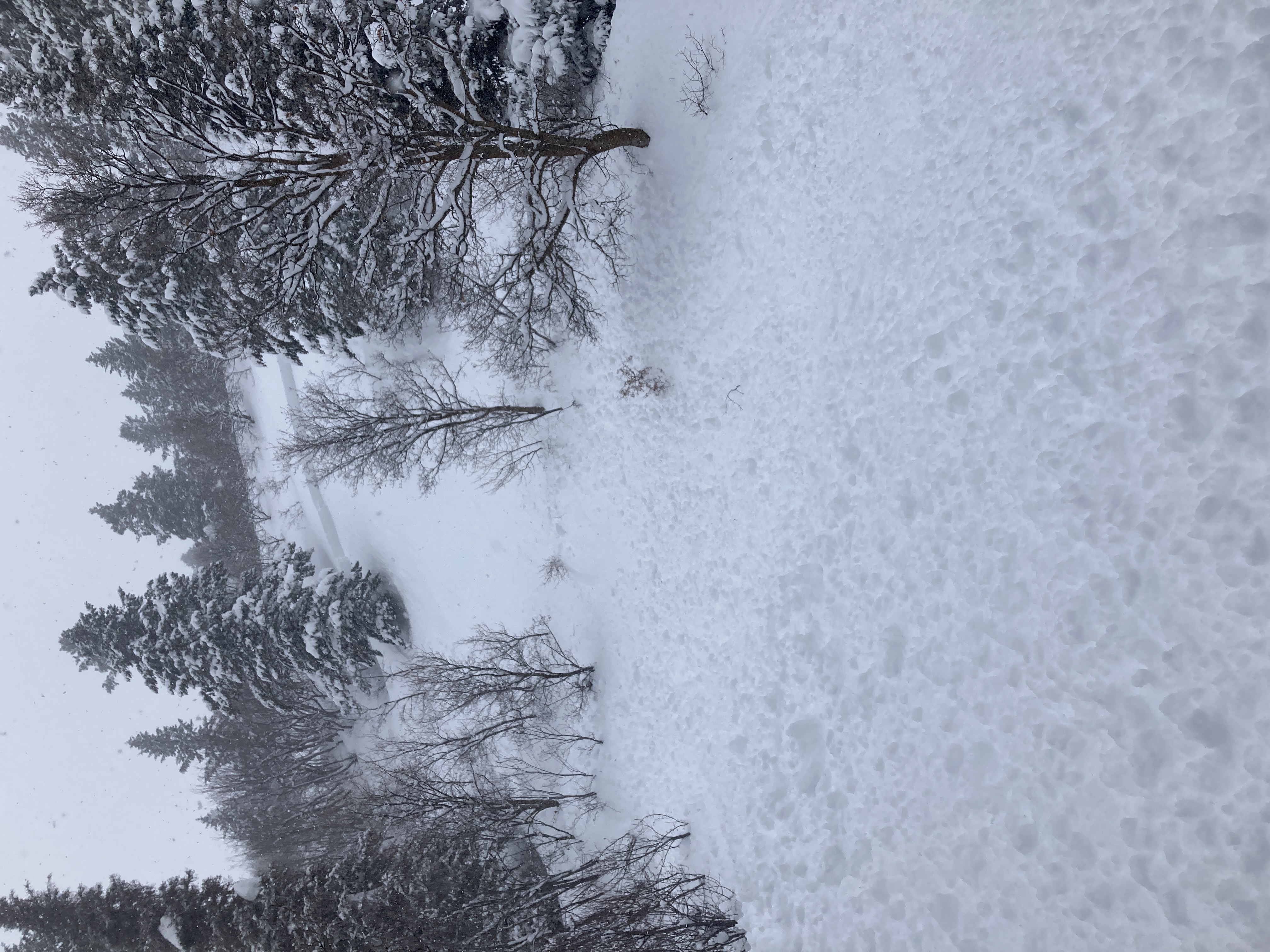I'm not sure how widespread Tuesday's rain was, but there were many lower elevation areas with very weak faceted snow before the storm capped it all with the new snow. Clearly poor snow structure exists now on many lower elevation slopes, and whether or not the sugary snow got saturated and is now refreezing is another question. Not many people got out yesterday, but reports from the lower and mid elevations in the backcountry include red flags, collapsing!, and cracking indicating unstable snow. So, watch for and avoid drifted areas where a slab of wind drifted storm snow has formed on a slope with poor snow structure. Better yet, just simply avoid and stay out from under slopes steeper than 30°, which is my plan for today.
The 8400' Tony Grove Snotel reports 19 inches of new snow from the storm so far, with 2.2" SWE. It's 9° F this morning, and there is 111 inches of total snow. Winds blowing from the south-southwest picked up a notch late last night at the CSI weather station at 9700' on Logan Peak, and this morning they are blowing 25 mph, with gusts of 45 mph.
Here is the NWS point forecast for high elevations in the Central Bear River Range:
Today: Snow likely, mainly after 11am. Mostly cloudy, with a high near 16. Wind chill values as low as -12. Southwest wind 16 to 20 mph. Chance of precipitation is 70%. Total daytime snow accumulation of 1 to 3 inches possible.
Tonight: Snow likely, mainly before 11pm. Mostly cloudy, with a low around 6. Wind chill values as low as -12. Southwest wind 13 to 18 mph. Chance of precipitation is 60%. New snow accumulation of 2 to 4 inches possible.
Friday: A 50 percent chance of snow. Mostly cloudy, with a high near 22. Wind chill values as low as -4. Breezy, with a southwest wind 10 to 15 mph increasing to 17 to 22 mph in the afternoon. New snow accumulation of around an inch possible
Cold cloudy weather and snow without significant accumulations will continue into the weekend. Saturday, temperatures will warm to around freezing at upper elevations. Looks like another potent storm is possible early next week.
Natural wet loose avalanches occurred at lower elevations Tuesday as rain saturated the snow. Observers yesterday in the Logan Zone reported obvious signs of instability including extensive audible collapsing and cracking at lower and mid elevations.
Skiers yesterday triggered a couple good sized slab avalanches at lower elevations in the nearby backcountry above Ogden Valley..... report
HERE
For a list of avalanches in the Logan Zone go
HERE Find a list of all recent observations & avalanches from across Utah
HERE.












